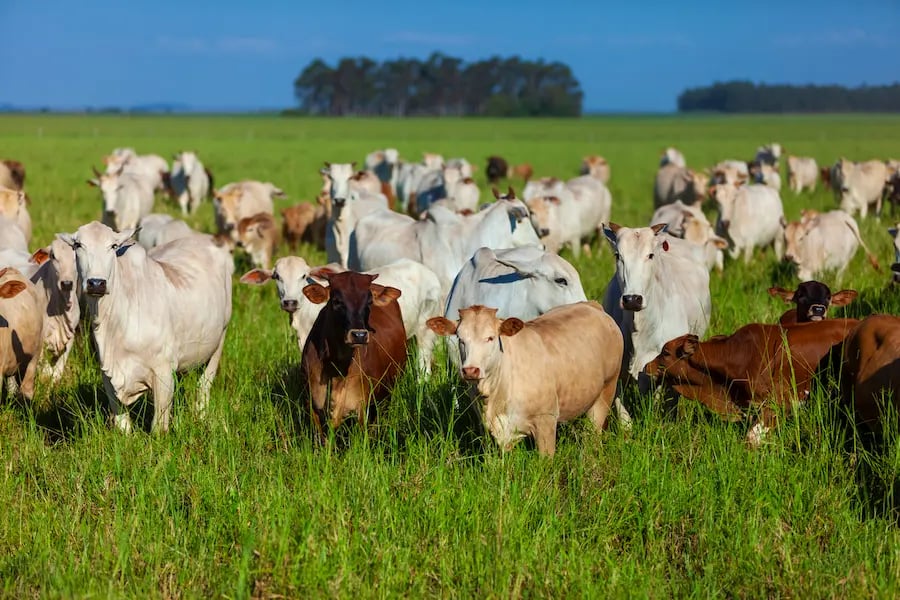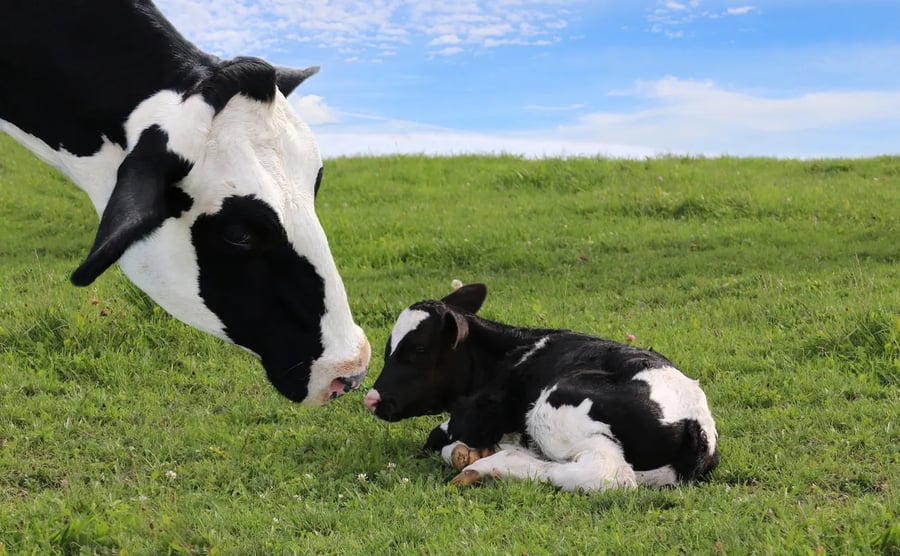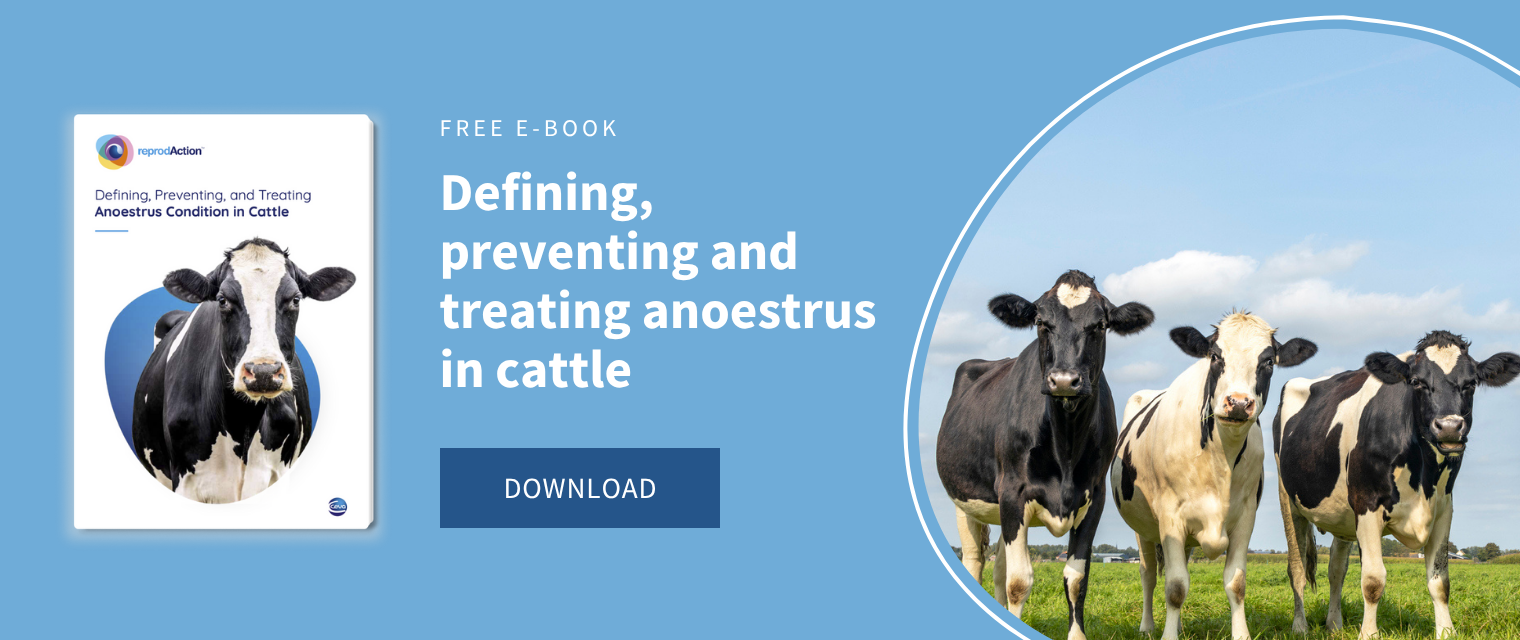The Artificial Insemination (AI) use in cattle has really started to accelerate after the end of World War II. At the start of 1950’s, in The United Kingdom, the introduction of progeny testing has initiated the process of best usage of sires of desired merit. This allowed the large scale adoption of the semen of these superior merit bulls without the limiting factor of their breeding capacity, or of the location and distance of the possible dams, allowing consequently to prove in large scale testing, the performances of their progeny.
On the technical front, the discovery of cryoprotectants, the freezing of semen using liquid nitrogen as refrigerant and the introduction of the plastic straw as a semen container have been a revolutionizing milestone in cattle reproduction.
Freezing of semen opened the way to developments in international trade; in many countries, for animal health reasons, it resulted in the disappearance of fresh semen from the commercial scene.
The use of AI has been the true “therapy” to eradicate trichomoniasis from the dairy industry in the entire World and the beef herds of all Europe (Yule et al., 1989).
Improvements in the insemination procedure permitted AI sperm doses to be decreased and enabled the maximum number of inseminations to be performed from a single ejaculate.
It can be claimed, with justification, that the use of frozen semen revolutionized dairy cattle breeding; where once one bull was kept to breed 40 cows, it became possible to think in terms of an outstanding dairy bull siring thousands of calves in a year, with his semen being used in several countries simultaneously and for years after his death. The record holder in this field is a bull named Toy Story, which reached the mind-blowing record of more than 2 million straws sold Worldwide and a number of offspring’s exceeding 500’000; this clearly gives a perspective of the potential of this technology.
In economic terms, the widespread application of AI in countries such as the USA has resulted in a steady improvement in the genetic quality of dairy animals and a doubling of milk yields during the past 50 years.
Some revolutionizing technologies have coupled with this well-established “tool” in recent years.
The introduction of genomics in the dairy farms
With the release of Genomic evaluations in 2009, information about a cow or bull’s genetic potential that previously would have taken years to obtain by progeny testing, can be revealed at a very young age.

Genomic selection offers many advantages with regard to improving the rate of genetic gain in cattle breeding programs. The most important factors that contribute to faster genetic gain include:
- Greater accuracy of predicted genetic merit for young animals.
- Shorter generation interval because of heavier use of young, genetically superior males and females.
- Increased intensity of selection because breeders can use genomic testing to screen a larger group of potentially elite animals, throughout this benefit they can significantly reduce the risk of inbreeding.
The advent and the potential of Sexed semen
Another remarkable breakthrough has been the Sexed Semen technology. The importance of maximizing the production of females, in dairy and beef herds, to be used as replacement born from the dams with the highest productive traits has always been an important achievement for cattle breeders. It has been always left out for hopes more than anything else, but nowadays this can be achieved with a 95% predictability when using Sexed semen and this one has become a very important biotechnology dairy and beef farmers.
The first successful attempts date back more than 30 years ago when the first semen selected for gender was produced by Dr Larry Johnson at the US Department of Agriculture (USDA) separating female and male rabbit sperm.
The principle behind the various technologies today available exploit the difference of DNA content of X and Y-bearing sperm cells: X-carrying spermatozoa contain 3.8% more chromatin than a Y-carrying sperm. The combined use of a live dye for chromatin Hoechst 33342 and an adapted cytofluorimetric system, allow either the physical separation between sperm types, or the Y-bearing sperm deactivation, in accordance to which technology is used: either Sexed Ultra® 4M from Sexing Technology or Sexcel® from Genus ABS, with a warranted >90% Sexed bias semen produced.
The fertility of the different types of Sexed semen has been tested in randomized controlled trials and normally have performed in a range between 80 and 85% of the fertility of the conventional semen of the same bulls (Maicas 2019, Drake 2020, Lauber 2021).
When evaluating single herds performances normally this discrepancy is not noticed, because farmers tend to use Sexed Semen on the most fertile population of their herds; for example in primiparous cows on their first AI and maiden heifers only for first and eventually second AI.
This, overall, is a good practice decision that allows the exploitation of the best genetic merit animals in the herd, but the results achieved overestimate the fertility performances of Sexed semen.
The implementation of fertility programs for Timed AI
The last technology which has surely revolutionized the way we are breeding cattle nowadays is Timed AI (TAI). These programs rely on the ability of controlling the physiological events of the reproductive cycle of cows and heifers allowing them to express their fertility at a specific timing, consenting for appointed insemination.
The success of this technology has its foundations on the pioneer work of Richard Pursley and Milo Wiltbank which in 1995 designed the Ovsynch protocol. It is an efficacious method to control the emergence of a follicular wave, the timing of luteolysis and finally the induction of ovulation; which still today are the events which we need to target in order to optimize the fertility of our female cattle for controlled breeding.

Interestingly, a recent review has analyzed the efficacy of these programs when compared to spontaneous oestrus and ovulation showing that these programs improve the reproductive performances of dairy cows (Fricke et al., 2022). How could we explain that?
The simple answer is that these programs, allow for:
- a precise timing of events which culminate with ovulation,
- the creation of a better environment for the maturation and fertilization of the oocyte,
- and afterwards, a more successful embryonic development in the mother’s reproductive tract.
From the first simple Ovsynch, many pre-synchronization programs have been developed over the last two decades improving overtime the achieved success of the first program.
Double-Ovsynch has been ultimately the most successful fertility program for the insemination of lactating dairy cows; this improvement finds most of its success in the creation of a high progesterone environment during the development of the follicle that ultimately will be ovulated just before the timed AI.
One drawback of this protocol is its duration, 27 days. For this reason it is mostly used for first AI only, allowing for a remarkable conception per AI close or even above 50% in many of the farms where is accurately applied.
Alternative protocols, which are shorter in duration, but still can reach high levels of conception per AI, are based on modified Ovsynch protocols which see the supplementation of progesterone using progesterone releasing intravaginal devices (PRID).
These devices mimic the presence of a naturally progesterone secreting corpus luteum, which is fundamental to exploit at best the fertility of the oocytes contained in the pre-ovulatory follicle.
Conclusions
Even though more than 70 years have passed since the industrial application of AI across the globe, it is still an irreplaceable tool for cattle breeders.
The introduction of genomics has allowed for a more precise selection of the best breeding animals in the herd and for a more accurate planning of sires to allocate to each dam.
The use of Sexed semen has complemented with the possibility of generating replacements from the most viable females of the herd speeding up even more the genetic gain of herds using these tools.
TAI programs have allowed the exploitation of the fertility of cows and heifers at a predicted timing, maximizing the chances of conception of these animals and also improve their ability of retention in the herd.
References
Drake E, Holden SA, Aublet V, Doyle RC, Millar C, Moore SG, Maicas C, Randi F, Cromie AR, Lonergan P, Butler ST. Evaluation of delayed timing of artificial insemination with sex-sorted sperm on pregnancy per artificial insemination in seasonal-calving, pasture-based lactating dairy cows. J Dairy Sci. 2020 Dec;103(12):12059-12068. https://www.doi.org/10.3168/jds.2020-18847 Epub 2020 Oct 15. PMID: 33069411.
Fricke PM, Wiltbank MC. Symposium review: The implications of spontaneous versus synchronized ovulations on the reproductive performance of lactating dairy cows. J Dairy Sci. 2022 May;105(5):4679-4689. https://www.doi.org/10.3168/jds.2021-21431Epub 2022 Mar 17. PMID: 35307178.
Lauber MR, Cabrera EM, Santos VG, Carvalho PD, Maia C, Carneiro B, Valenza A, Cabrera VE, Parrish JJ, Fricke PM. Comparison of reproductive management programs for submission of Holstein heifers for first insemination with conventional or sexed semen based on expression of estrus, pregnancy outcomes, and cost per pregnancy. J Dairy Sci. 2021 Dec;104(12):12953-12967.https://www.doi.org/10.3168/jds.2021-20617Epub 2021 Sep 27. PMID: 34593225.
Maicas C, Holden SA, Drake E, Cromie AR, Lonergan P, Butler ST. Fertility of frozen sex-sorted sperm at 4 × 106 sperm per dose in lactating dairy cows in seasonal-calving pasture-based herds. J Dairy Sci. 2020 Jan;103(1):929-939. https://doi.org/10.3168/jds.2019-17131 Epub 2019 Oct 23. PMID: 31668438.
Pursley JR, Mee MO, Wiltbank MC. Synchronization of ovulation in dairy cows using PGF2alpha and GnRH. Theriogenology. 1995 Nov;44(7):915-23. https://www.doi.org/10.3168/jds.2021-20617.10.1016/0093-691x(95)00279-h.PMID: 16727787.
Vishwanath R, Moreno JF. Review: Semen sexing - current state of the art with emphasis on bovine species. Animal. 2018 Jun;12(s1):s85-s96. https://www.doi.org/10.1017/S1751731118000496. Epub 2018 Mar 19. PMID: 29552998.
Yule A, Skirrow SZ, Bonduran RH. Bovine trichomoniasis. Parasitol Today. 1989 Dec;5(12):373-7. https://www.doi.org/10.1016/0169-4758(89)90298-6PMID: 15463161
About the author
Federico Randi (Ruminants Global Technical Manager)
Federico Randi is Global Technical Manager for Ruminants at Ceva Animal Health, specializing in cattle reproduction. With a Doctor of Veterinary Medicine degree “cum laude” from the University of Bologna, he focused his career on improving efficiency and sustainability of farmed animals. Randi conducts research on ruminants fertility, using technologies like Timed AI, embryo transfer, and recombinant technologies. His extensive experience includes collaborative projects with over 20 research institutions globally. He earned his PhD at University College Dublin, concentrating on fixed-time artificial insemination and embryonic maternal communication in cattle. Currently, he serves as a Board Member in the Scientific Commission of Animal Physiology for the European Federation of Animal Science (EAAP) as an Industry Representative.

.webp)


Leave your comments here